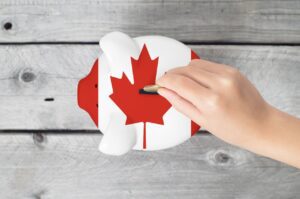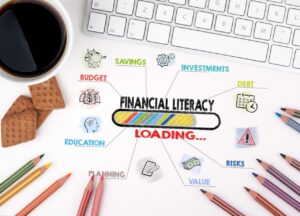While the relief felt after clearing debt is great, it doesn’t come without its challenges. Typically, any credit accounts cleared by using a debt relief program are required to be closed. With credit cards being the preferred method of payment lately, this creates an issue for many of those seeking freedom from debt. How do you make your monthly payments when you don’t have a credit card? This is what our reader, Phylis, is facing. Luckily, there are solutions. Read along as expert Colin explains what alternatives to credit cards are available.
The question
Dear Experts,
Thanks,
I just don’t have the money to handle my credit card payments anymore. I’ve finally decided to get things under control again and have been looking into debt management options. The thing is, a lot of them mean getting rid of my credit cards and I have automatic payments that go on them. These aren’t frivolous things. They’re things like my phone bill and software subscription that I need for work that don’t take payment in person. How can I manage these payments while I’m working to get rid of my debt?
Phylis J.
Corner Brook, NFLD
The answer
First of all, it’s great that you’re taking steps to regain control of your finances. You’re right that many debt management solutions need you to give up your credit cards. Thankfully, there are other options for paying your phone bill and other recurring monthly payments. Here are some ways to manage your payments without using a credit card, as you tackle your debt.
Do a subscription audit
A good first step is to consider the monthly payments you are currently making and cancel any subscriptions you no longer use or need. A recent Hardbacon survey found that Canadians pay for about eight subscriptions on average, though many think they have fewer. You can lower your monthly expenses by conducting a subscription audit. Start by reviewing your previous month’s banking and credit card transactions, and make a list of your subscriptions. Then, decide which ones are no longer worthwhile, and cancel them. You might be surprised by how much money you save with this exercise alone.
Switch to a debit card
Many online service providers allow you to pay with a Visa Debit card or a Debit Mastercard. These payment cards are linked to your bank account. So, while they offer the convenience of a credit card for online purchases, you are using your own funds instead of borrowing money. These debit cards only spend money in your account, so they help you avoid taking on more debt and make it easier to stay on track with your budget.
Use a prepaid debit or credit card
Another option is to use a prepaid debit or credit card. These cards can be a good alternative to credit cards, because you’re not borrowing money. Instead, you load funds onto the card. This amount becomes your spending limit. However, prepaid cards are not always a good idea. One downside is high fees — many prepaid cards charge admin fees, monthly fees, and fees for adding money to the card.
Pay through your online banking
You can likely pay your phone bill through your online banking app. Some banks will even let you set up automatic bill payments from your account, so you don’t have to do it each month. This might not work for online subscriptions, but Canadian banks and credit unions accept hundreds of different bills for online bill pay. Of course, you can also pay your bills over the phone, through an ATM, or in person at a bank teller.
Consider alternative payment methods (e.g., PayPal)
Find out if the products or services you subscribe to accept payment via PayPal or Stripe, in addition to credit cards. These online payment platforms allow you to send and receive money safely. The best part is that the seller pays the processing fees, so there are no charges for the customer. In the case of PayPal, you can arrange for the funds to come from your bank account instead of a credit card.
Look into a secured credit card
Depending on the debt management method you’ve chosen, you might be able to keep a secured credit card with a low limit. A secured credit card works like a regular credit card, but you must put down a deposit. This deposit acts as collateral, which reduces the risk for the lender.
For example, let’s say you want a card with a $500 credit limit. You would provide the money up front, and the credit card issuer would hold it in a safe investment or savings account. You would then be free to spend with the card. The low limit would reduce your risk of falling further into debt, and you could still enjoy the convenience of using a credit card. Remember that if you fail to pay off the monthly balance in full, you will be subject to a minimum payment and interest charges.
Keep a credit card with a reduced limit
If you get an unsecured loan or line of credit to pay off debt, you might be able to keep your current credit card open, but with a lower limit. This lets you still use it for monthly subscriptions. Another reason for keeping it open is that closing your credit card account can lower your credit score if it reduces your average account age, an important credit scoring factor.
Use a supplementary credit card
If you have a family member willing to add you as an authorized user on their credit card account, you could use their account for your payments. Just make sure you cover your full share of the payment due each month so they don’t get charged interest. Also, this isn’t likely to be a permanent solution. You may want to reapply for your own credit card as you pay down your debt and feel more confident about managing your monthly budget.
Open a separate bank account for monthly payments
If you’ve stopped using a credit card, think about opening a separate bank account for your monthly payments. This helps you keep your bill money separate from your spending money, making it easier to organize your finances as you pay down your debt. You can fund the account with the exact dollar amount needed to cover your payments, and not worry about forgetting a payment or overdrawing your account.
The bottom line
You can manage your monthly payments without a credit card by following the tips listed above. Remember to start by reviewing your current subscriptions. You might be paying for something you forgot about or no longer need. Next, explore other payment options, like a debit card, automatic payments from your bank account, PayPal, a secured credit card, or an authorized user card. Finally, you can set up a separate bank account for your monthly payments to stay more organized and under control.
Thanks for submitting your question!
Consolidated Credit’s executive director, Jeff Schwartz will review it and give his response here, along with any additional tips that our credit counsellors have to offer. If you need immediate assistance, please call us and a credit counsellor will get you the help you need.
Please note: We try to answer all questions within 48 hours. However, not all questions may be answered on the website. If your question is similar to one we’ve already answered, we’ll direct you to the appropriate response via email. If we need more information, we’ll contact you at the email provided.




